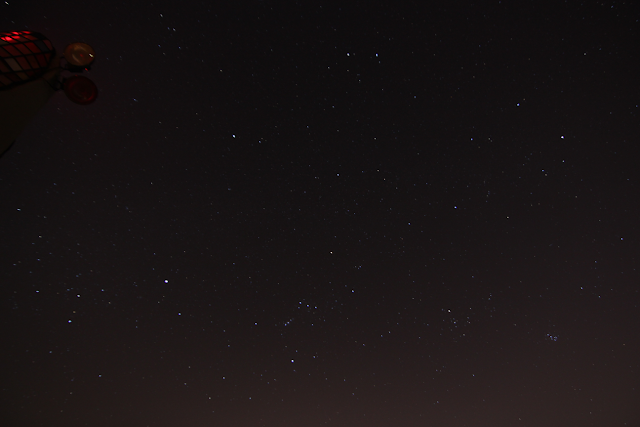The Winter Hexagon is the common name for a well known pattern of stars (the proper term is asterism) in a shape of a big hexagon which is seen on winter nights. The hexagon is large and all the stars creating it are from different constellations: Pollux and Castor (these two stars are counted as one node) from Gemini (the twins), Procyon in Canis-Minor (the lesser dog), Sirius in Canis-Major (the greater dog), Rigel in Orion, Aldebaran in Taurus (the bull) and Capella in Auriga (the charioteer). Two of these groups: Gemini and Taurus are part of the twelve groups of the zodiac. The stars of the hexagon are bright so you should be able to see all of them even from an urban area.
In the next photo you can clearly see the entire hexagon. In order to capture it you will need a wide lens (20mm or 12mm if you have an APS camera). Outside the hexagon in the bottom right corner the well known Pleiades cluster (M45) is visible. The red object at the bottom left is the top of a little tower where I took the picture from (Mitzpe Masoa - Israel). The camera is Canon700d with a Tokina 11-16 lens
The picture is from February 11th 2016, at midnight toward the west and the hexagon is about to set, especially the constellations Taurus, Orion and Canis-Major which set first.
 |
| The Winter Hexagon |
In the next photo I've added a thin line to connect the hexagon nodes and the names of the stars are displayed. It is possible to remove the line from Aldebaran to Capella and add a line from Aldebaran to Betelgeuse (The bright yellowish star above Rigel) and get the English letter "G".
 | |
|
In this photo I've added the lines to create the familiar shapes of the constellations. There are more constellation (complete or partial) in the photo but I just marked the six that create the Winter Hexagon.
 |
| The Winter Hexagon |